We 've made 11 international groups for research!
You can use any tool you want to present your results,
but you need to collaborate with students from your group, in order to do this task!
What do you have to research?
We have made an example:
Cucumber
Dictionary
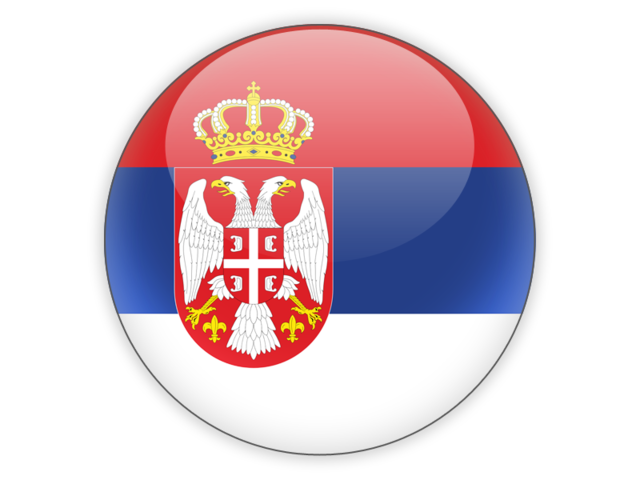 Krastavac
Krastavac 
 komkommer
komkommer  ΑΓΓΟΥΡΙ
ΑΓΓΟΥΡΙ  კიტრი/kitri
კიტრი/kitri
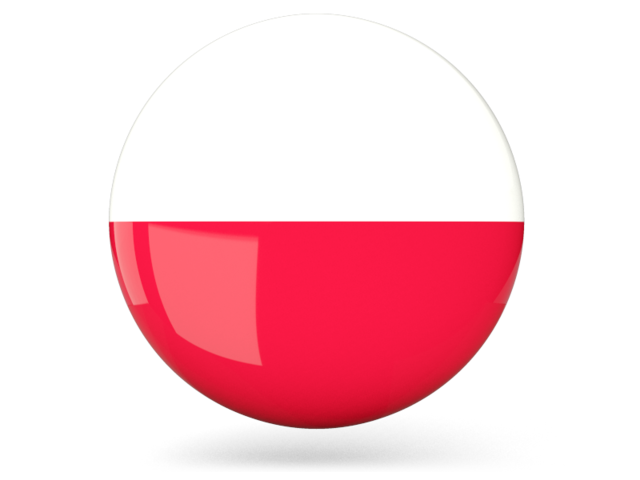 Ogórek
Ogórek
- A) Description, varieties, aroma, taste,...


- B) Real and Art Picture (+ information about the artist)
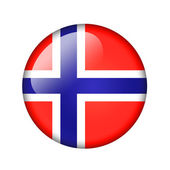
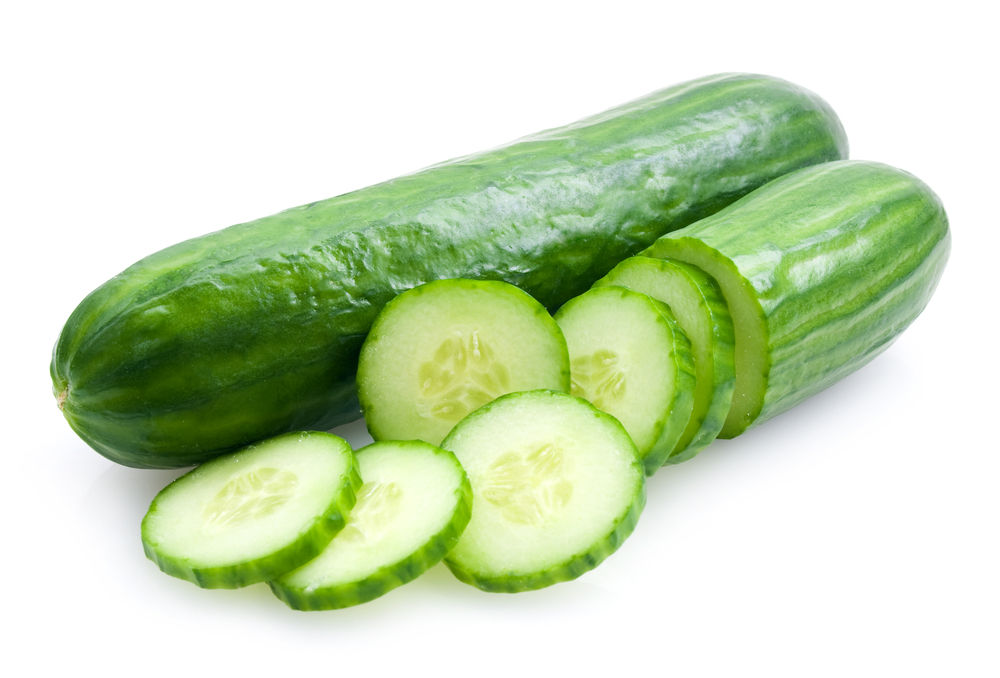
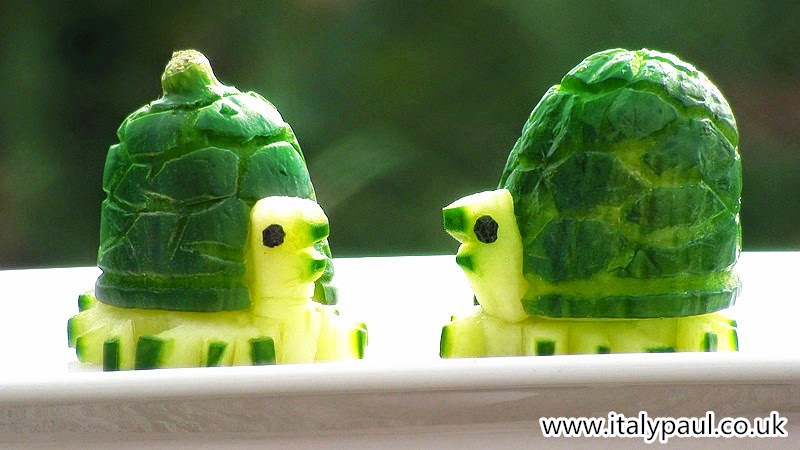
These cute turtles are made by ItalyPaul.co.uk Photographs! his website has some youtube tutorials about creating these kinds of Food Art.
Here is a link about some food art :)
https://sway.com/l8JeHKLBGOICPkYR
Enjoy!
- C) In 10 steps how to grow a cucumber


A summary of this page
http://www.wikihow.com/Grow-Cucumbers
- D) In which countries worldwide is it grown (produced)? Cultivation history


The History of the Cucumber
The cucumber originated in India, where even to this day the greatest number of varieties can be found
It has been cultivated in India for at least 3,000 years, but was probably introduced to Europe by the Greeks possibly Alexander the great.
Monastic writings from Northern France mention the cucumber being grown by monks in the 9th century,
Earliest cultivation
The cucumber is listed among the foods of ancient India and the earliest mention of the cucumber appears on a temple wall which also includes the oldest reference of the “zero” , Records of cucumber production in ancient Thrace were recorded by the ancient greeks.,
Today it is part of the modern cuisine of Bulgaria and Turkey. Cucumbers are mentioned in the Bible as one of the foods eaten by the Israelites in Egypt.
Some scholars believe it was introduced into China by venetian traders in the 15th century. .
According to Pliny the elder, the Ancient Greeks grew cucumbers, but there were different varieties in Italy, and Africa
Roman Empire
According to Pliny, the Emperor Tiberius had the cucumber on his table daily during summer and winter. The Romans reportedly used artificial methods (similar to the greenhouse system) of growing to have it available for his table every day of the year. "Indeed, he was never without it; for he had raised beds made in frames upon wheels, by means of which the cucumbers were moved and exposed to the full heat of the sun; while, in winter, they were withdrawn, and placed under the protection of frames glazed with 'mirrorstone' .
Reportedly, they were also cultivated in cucumber houses glazed with oiled cloth
Pliny the Elder describes the Italian fruit as very small, probably more like a gherkin, describing it as a wild cucumber considerably smaller than the cultivated one. Pliny also describes the preparation of a medication known as elaterium, The Romans used cucumbers to treat scorpion bites, bad eyesight, and to scare away mice. Wives wishing for children wore them around their waists. They were also carried by midwives, and thrown away when the child was born.
Middle Ages
Charlemagne had cucumbers grown in his gardens in the 8th/9th century. They were reportedly introduced into England in the early 14th century, lost, then reintroduced approximately 250 years later. The Spanish brought cucumbers to America in 1494. In 1535, Jaques Cartier, a French explorer, found “very great cucumbers” grown in Canada.
Throughout the 16th century, European trappers, traders, bison hunters, and explorers bartered for the products of American Indian agriculture. The native american tribes learned from the Spanish how to grow European crops.
In 1630, the Reverend Higginson produced a book called New England Plantation in which, describing a garden on Conant’s Island in near Boston known as The Governor’s Garden, he states: The countrie aboundeth naturally with store of roots of great varietie and good to eat. Our turnips, parsnips, and carrots are here both bigger and sweeter than is ordinary to be found in England. Here are store of pompions, cowcumbers, and other things of that nature which I know not...”
William Wood published in New England Prospect (published in 1633 in England) observations he made in 1629 in America: “The ground affords very good kitchin gardens, for Turneps, Parsnips, Carrots, Radishes, and Pompions, Muskmillons, Isquoter-squashes, coucumbars, Onyons, and whatever grows well in England grows as well there, many things being better and larger.”
Age of Enlightenment and later
In the later 17th century, a prejudice developed against uncooked vegetables and fruits. A number of articles in contemporary health publications stated that uncooked plants brought on summer diseases and should be forbidden to children. The cucumber kept this reputation for an inordinate period of time: “fit only for consumption by cows,” which some believe is why it gained the name, cowcumber.
A copper etching made by Maddalena Bouchard between 1772 and 1793 shows this plant to have smaller, almost bean-shaped fruits, and small yellow flowers. The small form of the cucumber is figured in Herbals of the 16th century, but states, "If hung in a tube while in blossom, the Cucumber will grow to a most surprising length."
Samuel Pepys wrote in his diary on 22 August 1663 “this day Sir W. Batten tells me that Mr. Newburne is dead of eating cowcumbers, of which the other day I heard of another, I think.” In "The Greenstone Door", William Satchell notes that "Te Moanaroa was dead – of a surfeit of cucumbers...", having eaten four of the "prickly" melons.
Cucumber production
Cucumber production varies as much as any vegetable product, but China goes unchallenged as the top producer. Largest cucumber producer countries are producing diverse colors in distinctive shapes. It is fourth biggest producing vegetable on the planet, which is likewise useful for human’s wellbeing.
For quite some time now, China has been standing in the number one spot as the world's largest producer of cucumbers and gherkins. Following the Chinese cucumber farming sector are those of countries such as Turkey and Iran well to its West. These three countries have been able to maintain the top three positions for most of the new millennium, with China estimated to produce around three-fourths of the global total every year. In fact, there were an amazing 54.3 million tons of these vegetables produced in China last year. The same cannot be said of countries like the US, where production of these commodities has gradually decreased, with a reduction in annual output of about 20% since 2000. The same trend is being seen in Japan, while countries like Spain are actually moving upwards in cucumber production rankings. Japan’s decrease was largely influenced by catastrophic disasters that have been experienced in the past decade, as has been the case in Thailand. However, they remain to be among the top producers of cucumber and gherkins globally.
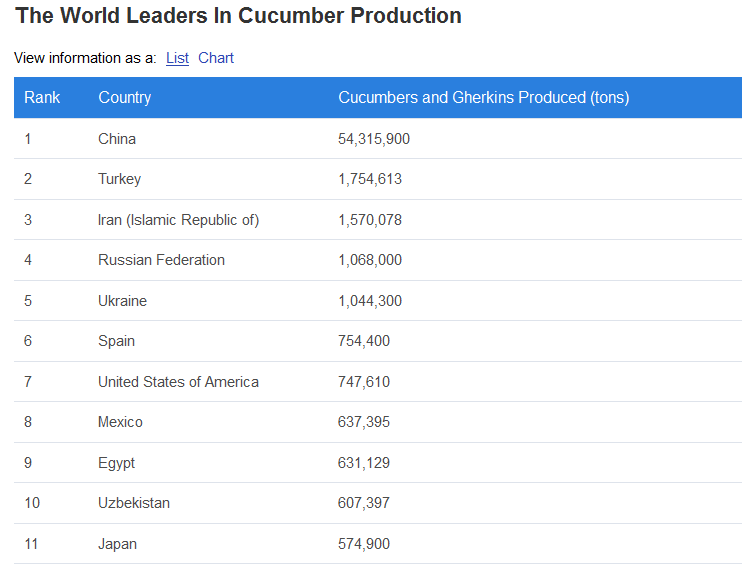
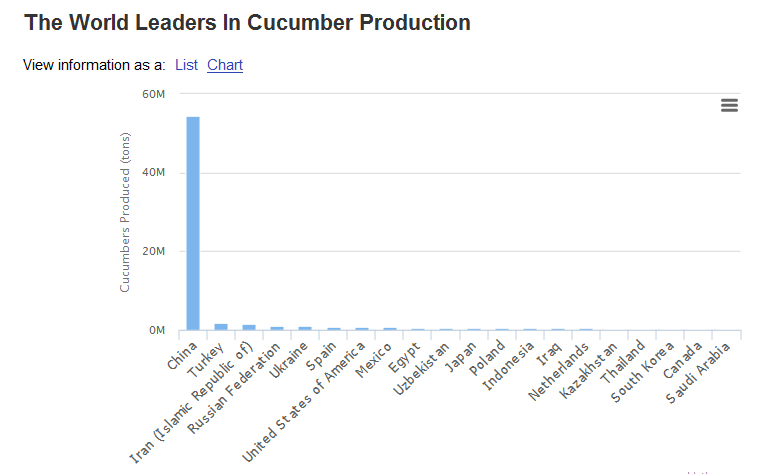
Data are from this site: http://www.worldatlas.com/articles/the-world-leaders-in-cucumber-production.html
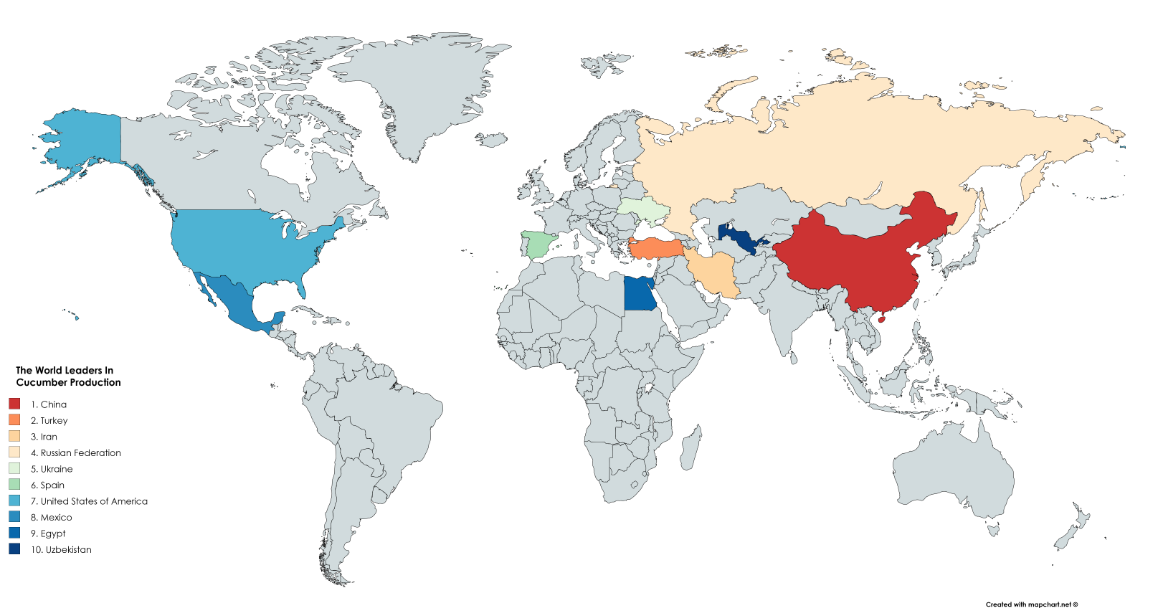
Map is made with: https://mapchart.net/
- E) Import and export in Europe


Extra-EU imports represent only 4% of total European imports. Indeed, EU cucumbers have a clear supremacy on their domestic market, and their import volumes have still increased +7% in value and +8% in volume. The biggest European importer is Germany (516,682 tons). It received 41% of European imports in 2015. The UK reached a total import volume of 139,465 tons, followed by the Netherlands (98,145 tons), Belgium (85,774 tons) and France (74,201 tons)
In 2015, the main suppliers for cucumbers in Europe were all European. Spain (€471.71 million) and the Netherlands (€393.67 million) combined were worth more than half of the total value of cucumber imports in Europe. Belgium (€47.96 million), Germany (€60.60 million) and Greece (€18.8 million) are among the top-5 suppliers in Europe.
Below are the 15 countries that exported the highest dollar value worth of cucumbers during 2015:
-
Spain: US$528.1 million (24.3% of total cucumbers exports)
-
Netherlands: $485.7 million (22.3%)
-
Mexico: $402 million (18.5%)
-
Canada: $174.3 million (8%)
-
Iran: $64.2 million (3%)
-
Belgium: $64 million (2.9%)
-
United States: $55.2 million (2.5%)
-
Turkey: $47.9 million (2.2%)
-
Jordan: $45.4 million (2.1%)
-
China: $33.9 million (1.6%)
-
Belarus: $29.3 million (1.35%)
-
Germany: $27.3 million (1.26%)
-
Greece: $25.5 million (1.2%)
-
France: $19.6 million (0.9%)
-
Austria: $13.9 million (0.6%)
The listed 15 countries shipped 92.8% of all cucumbers exports in 2015 (by value).
Among the above countries, the fastest-growing cucumbers exporters since 2011 were: Belarus (up 113.7%), Belgium (up 85.1%), Mexico (up 55.3%) and China (up 47.8%).
Those countries that posted declines in their exported cucumbers sales were led by: Jordan (down -62.6%), Iran (down -53%), Turkey (down -19.1%) and United States (down -6.4%).
Source:
http://www.eurofresh-distribution.com/news/european-supremacy-cucumbers
http://www.worldstopexports.com/top-cucumbers-exporting-countries/
F) Prices in Europe


- (flag, price, shop)
 0.85 euro, Colruyt
0.85 euro, Colruyt 




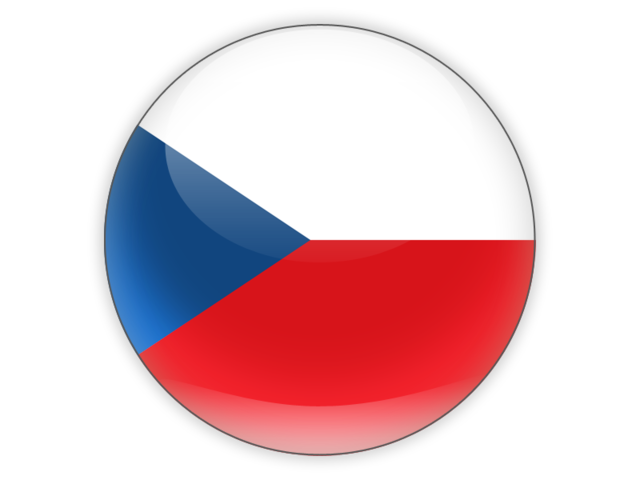

 1.17 euro, TESCO
1.17 euro, TESCO 1,19 euro, Carrefour
1,19 euro, Carrefour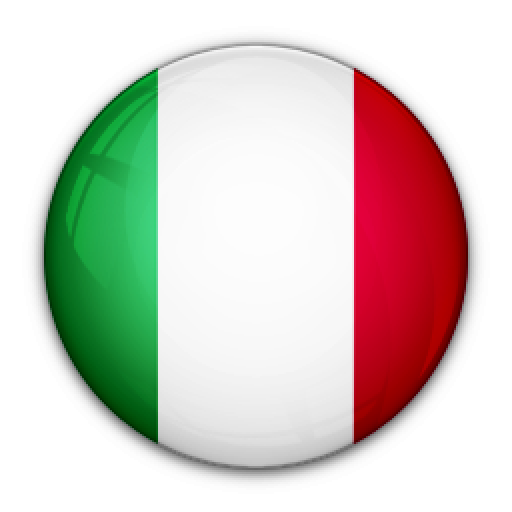


 1.53 euro, Pijace
1.53 euro, Pijace 0,55 euro, Piata
0,55 euro, Piata 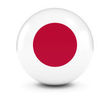 0,52 euro, IWASE
0,52 euro, IWASE 0,99 euro Maine Grocery Delivery
0,99 euro Maine Grocery Delivery


- H) Science experiment 1: Search a science experiment suitable for a cucumber. Each of the responsible schools does the experiment, and compares the results. (you can invite every person in your group to do the experiment)
Source : https://www.youtube.com/watch?v=dD9dGFrFcoo
- I) Science experiment 2: Foodpairing : cucumber in combination with another (vegetable or fruit )


Alena and Nataša
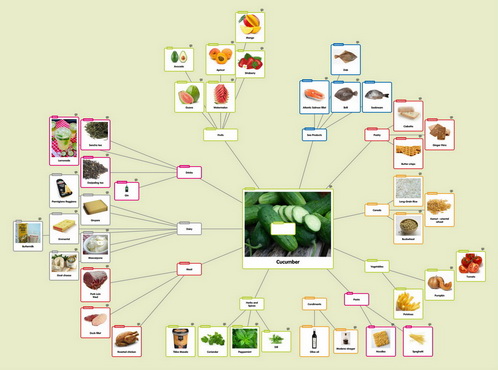
J) Health benefits and Nutrional values:
Few foods are as cool as a cucumber. These low-calorie veggies contain many nutritional benefits, including hydrating properties and valuable nutrients...


Nutritional profile
Cucumbers are good sources of phytonutrients (plant chemicals that have protective or disease preventive properties) such flavonoids, lignans and triterpenes, which have antioxidant, anti-inflammatory and anti-cancer benefits, according to World’s Healthiest Foods. The peel and seeds are the most nutrient-dense parts of the cucumber. They contain fiber and beta-carotene, a form of vitamin A that is good for eyes, and cucumber seeds were a good source of minerals, and contained calcium.
Cucumbers are naturally low in calories, carbohydrates, sodium, fat and cholesterol. There are just 16 calories in a cup of cucumber with its peel (15 without). You will get about 4 percent of your daily potassium, 3 percent of your daily fiber and 4 percent of your daily vitamin C. They also “provide small amounts of vitamin K, vitamin C, magnesium, potassium, manganese and vitamin A,
Here are the nutrition facts for cucumbers, according to the U.S. Food and Drug Administration, which regulates food labeling through the Nutritional Labeling and Education Act:
|
Nutrition Facts
Cucumber, with peel, raw
Serving size:
1/2 cup, sliced (52 g)
Calories 8
Calories from Fat 0
*Percent Daily Values (%DV) are based on a 2,000 calorie diet.
|
Amt per Serving |
%DV* |
|
Amt per Serving |
%DV* |
|
| Total Fat 0g |
0% |
|
Total Carbohydrate 2g |
1% |
| Cholesterol 0mg |
0% |
|
Dietary Fiber 0g |
0% |
| Sodium 1mg |
2% |
|
Sugars 0g |
|
| Protein 0g |
|
|
|
|
| Vitamin A |
1% |
|
Calcium |
1% |
| Vitamin C |
2% |
|
Iron |
1% |
Health benefits of cucumbers
Hydration
Cucumbers are 95 percent water. This makes cucumbers a great way to stay hydrated, especially during the summer.
The anti-inflammatory compounds in cucumbers help reduce skin irritation and has anti-aging impact on skin.
Cancer prevention
Cucumbers contain two phytonutrient compounds associated with anti-cancer benefits: lignans and cucurbitacins. In recent years, pharmaceutical companies have been paying special attention to cucurbitacins, hoping to use them in new cancer drugs. According to a 2010 research review published in Scientific World Journal, scientists have found that cucurbitacins can help block the signaling pathways that are important for cancer cell proliferation and survival.
Skin
You’ve probably seen pictures of people at a spa relaxing with cucumber slices over their eyes. It turns out there’s science behind this pampering ritual. Ware explained, “Cucumbers have a cooling and soothing effect that decreases swelling, irritation and inflammation when used topically. Cucumber slices can be placed on the eyes can decrease morning puffiness or alleviate and treat sunburn when placed on the affected areas.” She also noted that high vegetable intake is associated with a healthy complexion in general.
Bone health
In the past few decades, it has become clear that vitamin K is important to bone health, and one cup of cucumber contains about 19 percent of the recommended daily intake of vitamin K. One review published in Nutrition noted that vitamin K intake might reduce fracture rates, work with vitamin D to increase bone density and positively affect calcium balance.
Antioxidants
Cucumbers contain several antioxidants, including vitamin C, beta-carotene and manganese, as well as flavonoids, triterpenes and lignans that have anti-inflammatory properties.
Heart health
“Eating a variety of fruits and vegetables of all kinds is associated with a reduced risk for many health conditions, such as heart disease, diabetes, stroke and obesity,” said Ware. Cucumbers’ potassium content may be especially helpful in this regard. One cup of sliced cukes contains only about 4 percent of the body’s daily potassium needs, but it comes with significantly fewer calories than most high-potassium foods like bananas.
The vitamin K in cucumbers is also known to be essential in the blood-clotting process.
Risks of eating cucumbers
There can be a few risks from eating cukes. Pesticide consumption is one concern. Ware explained, “The Environmental Working Group produces a list each year of fruits and vegetables with the highest levels of pesticide residue, known as the Dirty Dozen. Cucumbers are one of the fruits and vegetables that the Environmental Working Group has placed on its Dirty Dozen list, meaning the exposure to pesticide residue is high.”
Additionally, cucumbers may be waxed to help protect them during shipping. According to World’s Healthiest Foods, both organic and conventionally grown cukes may be waxed, but organic ones can only use non-synthetic waxes with chemicals approved under organic regulations. For this reason and the pesticide concerns, World’s Healthiest Foods encourages buying organic cucumbers. But Ware stipulated, “This does not mean you should avoid cucumbers altogether if you can’t find or afford organic. The nutritional benefit of eating conventionally grown produce outweighs the risk of not eating produce at all.”
Pickles
Pickling is a method of preserving food — and not only cucumbers — to prevent spoiling. There are two basic types of pickles: fermented and non-fermented, according to the World's Healthiest Foods.
Fermented pickles have been soaked in brine, which is water that has been saturated with salt. The word "pickle" comes from the Dutch word pekel, which means brine. Brines can also contain other ingredients, such as vinegar, dill seed, garlic and lime.
Dill pickles are brined with dill added to the solution, obviously. Kosher dills are brined with dill and garlic. "Kosher" in this case does not necessarily mean the cucumbers have been prepared according to kosher dietary laws, however; it just means garlic has been added to the brining process, according to the World's Healthiest Foods.
Gherkin pickles are usually just immature cucumbers, according to Cornell University.
Source: http://www.livescience.com/51000-cucumber-nutrition.html